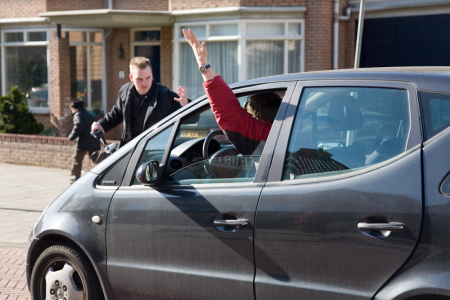The new fact sheet 'Risky road user behaviour, aggression and repeat offenders' provides an overview of current knowledge about behaviour that adversely affects road safety, such as driving under the influence of alcohol, drugs or medicines, speeding, inappropriate speed, distracted or fatigued driving, red light negation, and failure to use or misuse means of protection (motorcycle or moped helmet, seatbelt).
Younger road users more often display risky behaviour than older road users, and men more often than women. Aggressive behaviour is a specific form of risky road user behaviour, which aims to harm other road users physically or emotionally, for example by tailgating, excessive horn honking, flashing one’s lights, yelling and/or making obscene gestures. Aggressive road user behaviour often stems from impatience, frustration, animosity and/or hurrying, and often goes hand in hand with anger. People who generally tend to get angry quickly, also display aggressive road user behaviour more often. A different form of risky road user behaviour is repeat offending. The ‘repeat offender scheme’ defines repeat offenders as road users who commit at least three serious traffic offences within two years. The commission of multiple minor offences is also relevant, as this seems to be associated with greater crash involvement.
Effective measures to prevent risky behaviour are, a.o. targeted enforcement, devices to minimise specific road user behaviour (such as an alcohol lock or intelligent speed assistance) and data recorders to monitor road user behaviour. In addition, aggressive road users can learn to reduce their anger behind the wheel by means of psychotherapy programmes. Sending letters that tell road users they are registered as repeat offenders, and having personal conversations about their road user behaviour are examples of specific supplementary measures aimed at repeat offenders.

